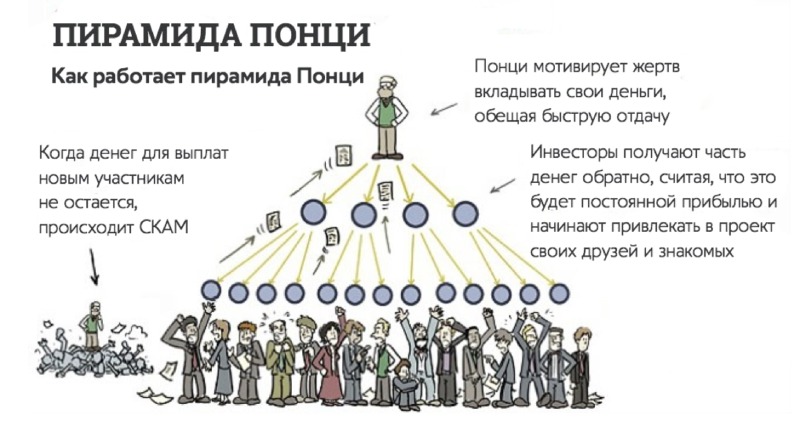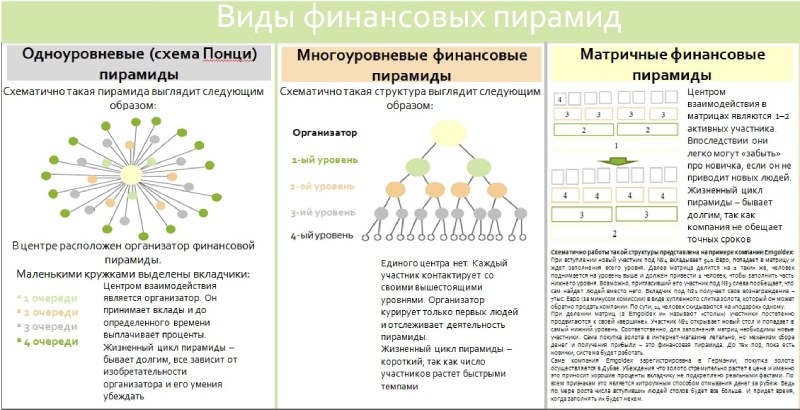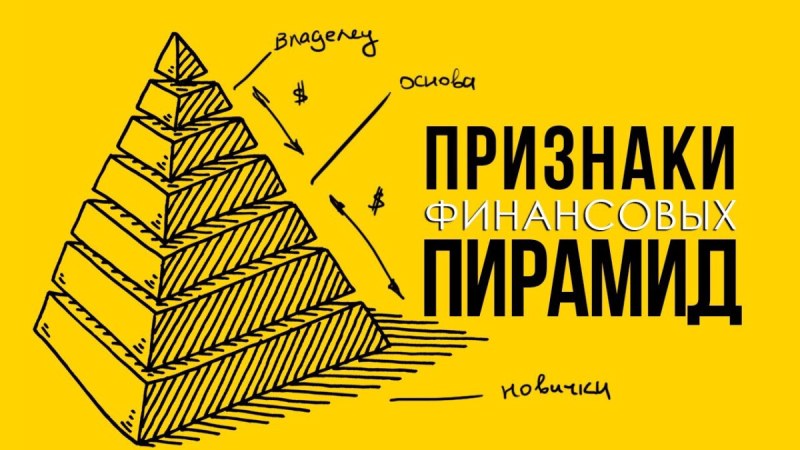Financial pyramids represent a scam that promises high returns. Money is earned by continuously and incessantly attracting new investors to the project. Participants join an existing group, invest funds, and then use various methods to lure new users. The more people a client brings in, the more income they receive. But in the end, only the creator of the pyramid can profit.
It is impossible to speak of the complete disappearance of this type of scam. As some investment pyramids close, new ones appear in their place.
Ponzi schemes – the oldest way of scamming money
Ponzi schemes are already several hundred years old. They are named after a famous Italian immigrant – Carlo Ponzi. According to history, he deceived more than a thousand residents in Boston with false promises of 'golden mountains.' How do the schemes work?
The following stages of criminal activity are identified:
- Attracting the first investors – users are convincingly told about the opportunity to get 'juicy' profits. This is done so convincingly that the person believes and invests funds;
- Payout to initial participants – dividends or a certain percentage is paid to the first investors who joined the scheme. The payout comes from the investments of people who joined the project after them. This creates the illusion that the scheme is indeed working;
- Then comes the phenomenon known as exponential growth. Active recruitment of people begins. Often they are promised additional commissions;
- 'Collapse' stage. The pyramid completely collapses when there are not enough new participants to pay earnings to those already in the scheme. That is, most investors are left with significant losses.

The Ponzi scheme and the traditional investment pyramid have a slight difference. It lies in the way investors are attracted to the project. In a typical financial pyramid, users themselves are involved in inviting new clients using marketing tools – this is called a referral program. Additionally, those who attract are guaranteed bonus rewards. In a Ponzi scheme, things happen a little differently. The lure into the scam network is handled directly by representatives of the brokerage or investment organization – they use an 'aggressive marketing approach' for this.
Types of financial pyramids
In general, there are three types of investment pyramids: those consisting of one level, multilevel, and matrix.

The single-level type includes the well-known Ponzi scheme. The organizer acts as the center of interaction with all investors. Only he accepts investments and then distributes and pays out the percentage of profits.
In a multilevel financial pyramid, participants have connections with higher levels. The person who organized the project interacts only with the first clients and further controls the work and development of the pyramid.
The matrix type is managed by one or several active investors. Subsequently, they can forget about new participants who do not show activity and do not bring users into the scheme. Here’s how it works: an investor makes a deposit. Then he waits for the first level to be fully filled and the number of participants reaches, for example, 10 people. Then these 10 people move to a higher level, where they split into 2 matrices of 5 investors each. These two groups must build their hierarchy and at the same time attract new partners to the project.
How to recognize a financial pyramid
Since pyramids are investment fraud, it is necessary to consider that they are accompanied by a high risk of monetary loss.

There are several signs of pyramid schemes, paying attention to which can save money from fraudsters:
- a large amount is proposed to be invested, while promising a high percentage of returns and quick return on investments;
- an important indicator of a financial pyramid is the need to attract new participants to the investment project;
- active advertising, which offers many bonuses, lotteries, various expensive gifts.
Of course, it is not advisable to invest in platforms that hide their legal documents and contact information.
How to protect yourself from financial pyramids
Never trust advertisements that beautifully talk about risk-free investments with 200% returns in a few days or a week.

Be cautious when companies offer to additionally earn on a partner program – the more active clients you bring into the project, the more rewards you will receive. If there is no legal documentation available openly, demand that the platform's management or managers provide them for review. If the organization refuses to show a license or Certificate of Registration, then the firm's investment activities are illegal.
Investing in pyramids is almost a 100% loss of money. Be careful when choosing a platform for investment. It is worth remembering that in financial pyramids, only the organizer earns.
